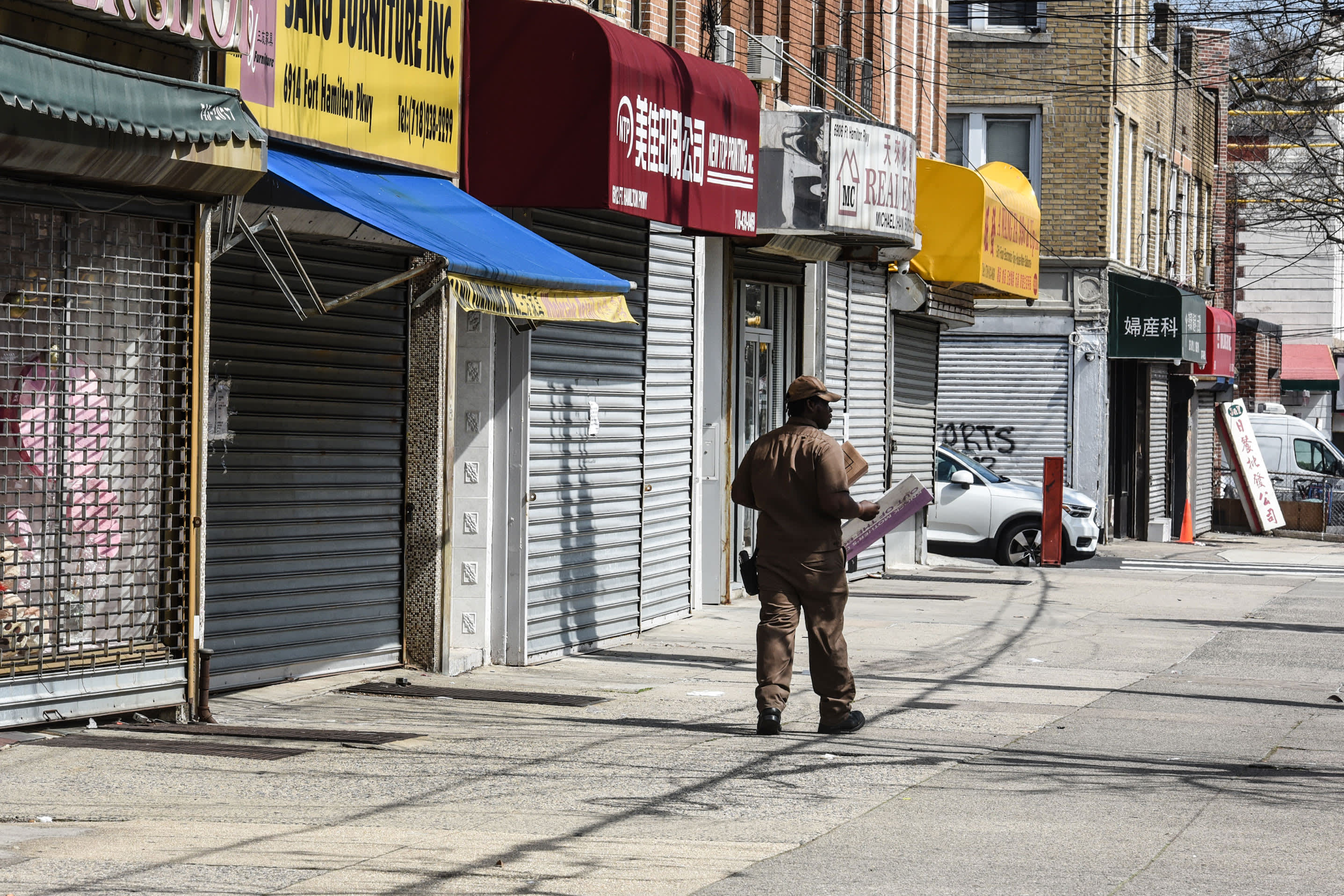A worker for United Parcel Service Inc. (UPS) makes deliveries on a street with closed stores in the Borough Park neighborhood in the Brooklyn, New York, April 7, 2020.
Stephanie Keith | Bloomberg via Getty Images
Minority, women-owned and rural small businesses may not have received loans under the Paycheck Protection Program because the Small Business Administration did not instruct lenders to prioritize underserved communities as called for under the law, according to an inspector general report.
The watchdog report also found the SBA did not include demographic information on loan applications and, as a result, will likely not be able to determine whether funds went to underserved communities as intended.
“Because the SBA did not provide guidance to lenders about prioritizing borrowers in underserved and rural markets, these borrowers, including rural, minority and women-owned businesses may not have received the loans as intended,” the inspector general said.
The Paycheck Protection Program, established by the CARES Act, offers low-interest loans to help keep small businesses afloat as state-mandated social distancing measures have ground the economy to a virtual standstill across the country. Small businesses are eligible to have those loans forgiven if they use the money for approved purposes.
However, the inspector general found the SBA and Treasury Department issued requirements for loan forgiveness that do not align with the law. The SBA requires borrowers to use at least 75% of the loan to cover payroll to qualify for forgiveness, but the CARES Act doesn’t call for this, according to the report.
Many small businesses, particularly restaurant and bar owners, have complained that the 75% requirement prevents them from using the bulk of the funds to cover expenses such as rent, utilities and payments to vendors.
The inspector general called for the SBA to reconsider the 75% requirement, issue guidance requiring lenders to prioritize underserved communities, and revise borrower applications to include demographic data.
“The Inspector General’s review makes clear that the Trump administration must immediately fix the Paycheck Protection Program to help the truly small businesses that have so far not received the help they need,” said Sen. Chuck Schumer, D-NY, who requested the report along with Sens. Ben Cardin (D-Md.) and Sherrod Brown (D-Ohio).
“SBA must do more to stop the special treatment for well-connected big business at the expense of legitimate small businesses struggling to stay afloat and support their workers during this pandemic,” Schumer said.
The SBA declined to comment.
The Paycheck Protection Program was rolled out in a matter of days in early April and faced unprecedented demand amid mass layoffs and business closures due to social distancing measures. The $349 billion fund quickly ran out of money and faced furious criticism that publicly traded companies were receiving the bulk of the loans, while small businesses struggled to get applications processed amid technical problems and confusion.
A second round of $310 billion in funding was approved in late April, with loans totaling more than $187 billion approved through Friday. The SBA has signed off on more than 2.5 million loans with an average size of $73,512, compared to more than 1.6 million loans approved during the first round, with an average size of $206,000.
The National Federation of Independent Businesses, in a survey published Tuesday, said more small businesses are now receiving funding, with 61% of applicants receiving their loans so far.
